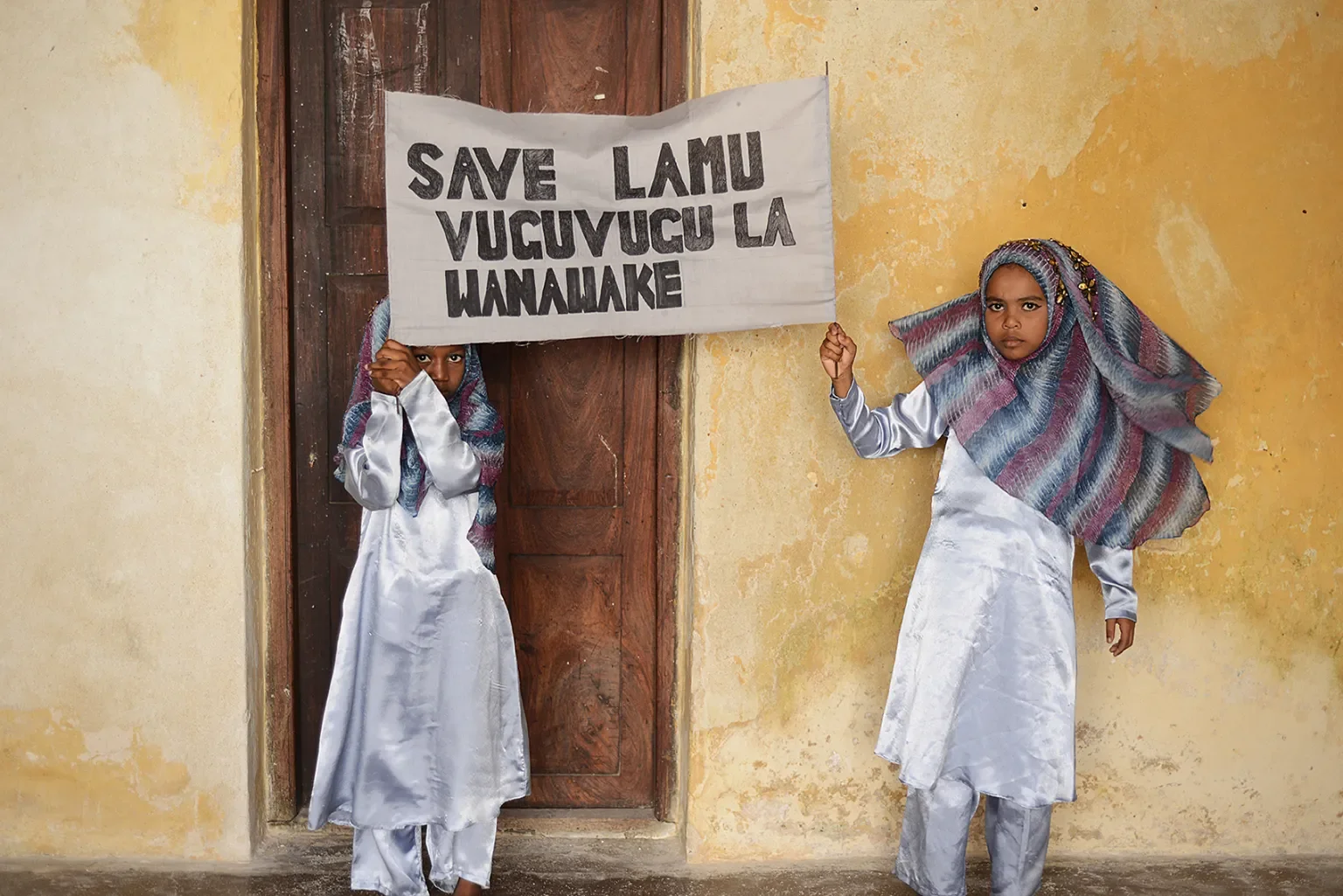TIMELINE OF EVENTS: LAMU COAL PROJECT
Image source: Dana Ullman for Foreign Policy
If you ever need proof that people can win against fossil fuel giants, look to the coast of Kenya.
For over a decade, the people of Lamu have stood firm against a proposed 1,050 MW coal power plant backed by Amu Power Company Ltd. Supported by Save Lamu, DeCOALonize, Natural Justice, and Katiba Institute, they built one of the most resilient climate justice movements in the region.
The plant was to be constructed on Manda Bay in Lamu, within the rich, biodiverse ecosystem of the Lamu Archipelago — just 20 kilometres from Lamu Old Town, a UNESCO World Heritage Site celebrated as the oldest and best-preserved Swahili settlement in East Africa.
And this month, they won. Again.
Here’s a timeline of how the decade-long people’s movement turned the tide against coal in Kenya.
-
The Kenyan government issued an Expression of Interest inviting investors to develop a coal power plant in Lamu.
-
By September 2014, it was announced that the 1,050 MW coal plant would be built by Amu Power Company Ltd, a consortium comprising Kenyan firms Centum Investment Group and Gulf Energy Ltd, alongside Chinese partners China Huadian, Sichuan Electric Power Design and Consulting Company, and Sichuan No. 3 Power Construction Company.
-
In June 2015, the Industrial and Commercial Bank of China (ICBC) signed a financing agreement with the consortium, pledging to arrange approximately USD 900 million in export credit and act as the project’s financial advisor.
-
In September, Kenya’s National Environmental Management Authority (NEMA) issued an Environmental Impact Assessment (EIA) licence to Amu Power, based on its submitted Environmental and Social Impact Assessment (ESIA).
However, the same year, the Lamu County Assembly rejected that ESIA report, demanding a clear resettlement plan for residents whose land would be affected. The project had already earmarked 975 acres for development, potentially displacing 600 landowners.
-
In February, the Energy Regulatory Commission (ERC) claimed all environmental, technical, and economic concerns raised by Save Lamu had been addressed, granting construction approval.
That same month, Save Lamu, supported by civil society allies, filed a lawsuit against Amu Power Company and NEMA, arguing that the EIA licence had been unlawfully obtained and lacked proper public participation.
Later in July, newly appointed ERC Director Pavel Oimeke dismissed community objections against issuing an energy generation license and quietly approved it.
-
In June, the National Environment Tribunal (NET) delivered a landmark judgment revoking Amu Power’s environmental license, citing failures in stakeholder consultation and environmental due process.
On July 26, the Tribunal further ruled that both Amu Power and NEMA had violated the law by approving the project without genuine community participation or a fair evaluation of cleaner alternatives.
-
In September 2019, Amu Power appealed the ruling. But momentum had shifted. By November 2020, ICBC informed civil society groups it was withdrawing from the deal.
-
In October 2024, deCOALonize Kenya reported that Amu Power had submitted written arguments for its 2019 appeal earlier that year. The Environment and Land Court scheduled a hearing for October 17, 2024.
-
On March 3, 2025, the Environment and Land Court held a full hearing on Amu Power’s appeal.
Finally, on October 16, 2025, the Court upheld the NET’s 2019 ruling, once again revoking the Lamu coal project’s EIA licence.

